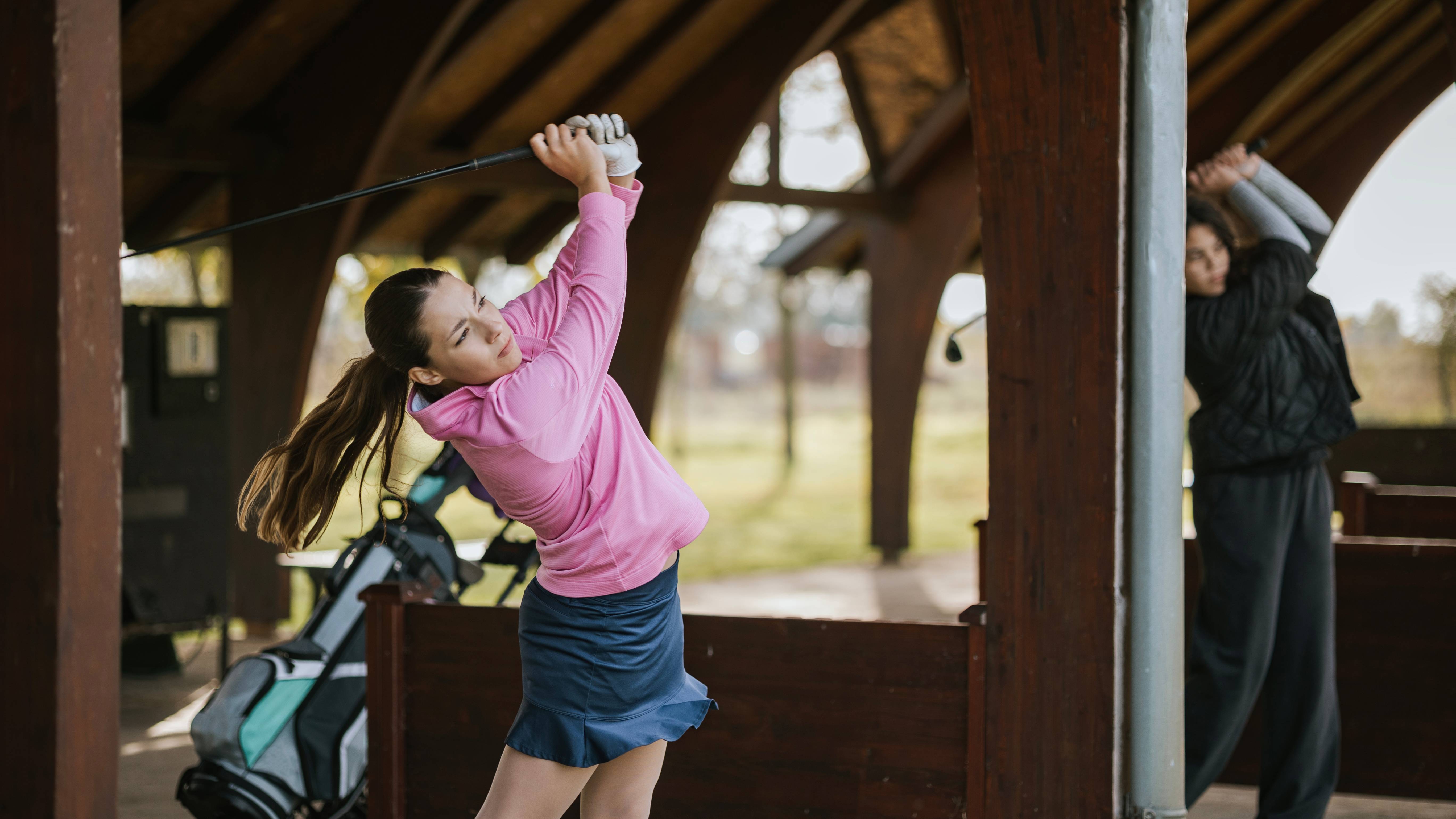
I recently received a message from a woman who I taught about two years ago as a beginner golfer. She was asking how she should navigate a dilemma, so let me provide some background information…
This woman recently joined her first golf club, she loves being part of club life and is fully embracing the challenges that playing on a big golf course brings. One of the things she enjoys most is practicing and I mean really practicing. We are not talking about ten quick hits in the net or some panicked putts before playing. She loves nothing more than being out on her own hitting balls, working on her swing, or going out on the course by herself, where she can focus and try different shots.
However, some women at the club have made comments to her along the lines of, “You need to get out and play more with other women,” and she feels she’s been labelled as odd for choosing to practice so much. Is she odd? Is it the done thing to stick to your dedicated practice sessions over playing with others? What is considered to be the norm? These are the questions she wanted answered.

As always, I was my straight-talking self and answered along the lines of, “Yes, you are odd and will have been marked as such because from my experience a lot of women don’t often practice. This could be said for amateurs in general, with the main priority for playing golf being to socialise, meet new people and enjoy the game with others.
You, however, are on your own journey with golf, you love the pursuit of improvement. Everyone has their own reasons for playing and none are less or more valid, so be bold enough to pursue your own goals and purpose for playing and practicing. It can be all too easy to try and follow the crowd, but do not sacrifice your own enjoyment by prioritising others, we do enough of that in life already!
As someone fairly new to golf and club life, she appreciated the encouragement to do her own thing and to keep practicing, which is great, but I was left saddened that these types of comments had even been made. It is not the first time in my career I’ve heard female golfers speak disparagingly about other women for being ‘too serious’ and when I’ve asked what makes them serious, it’s simply because they have golf lessons, practice, and try hard on the course.
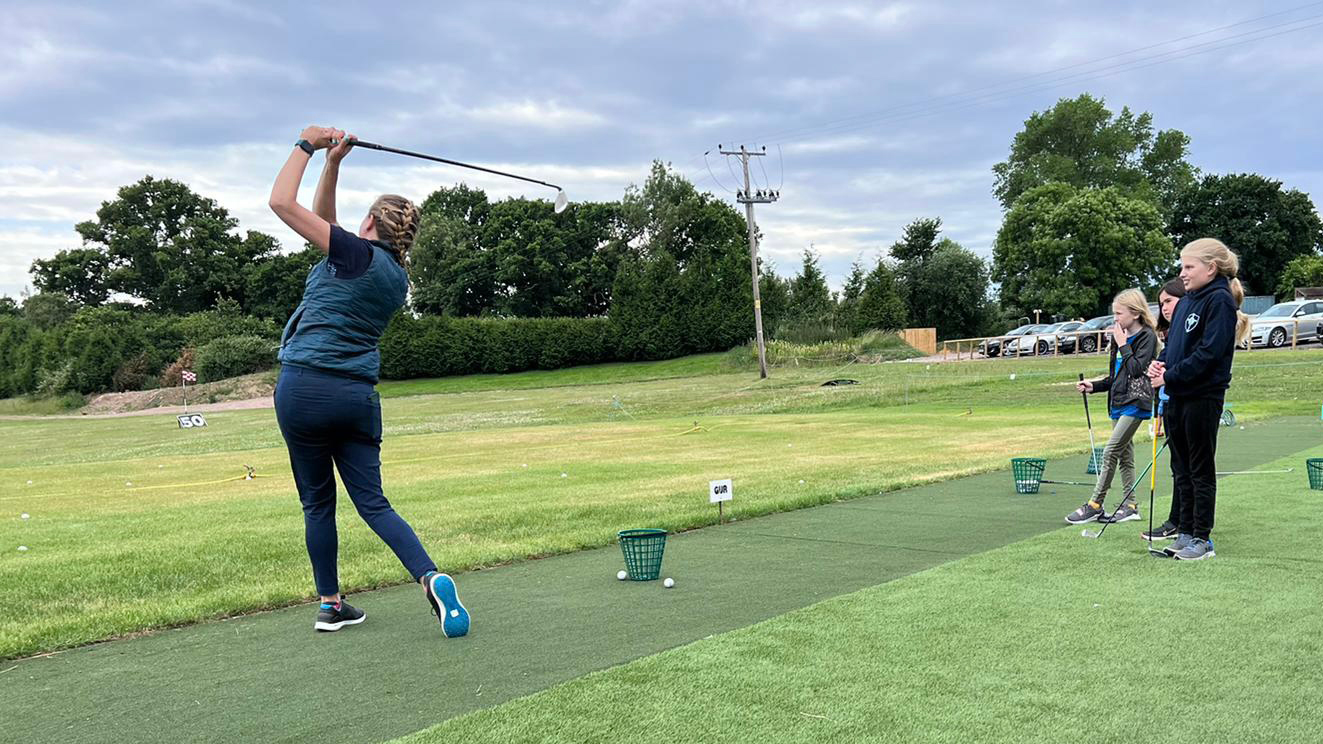
Oh, how awful of them to try and improve at the sport they invest time and money in. I have only tended to see these types of comments made by competitive club golfers who are off a handicap of around 15 plus. Women with a lower or single figure handicap are accepted as being players that practice to reach that standard. So, what is the issue around women practicing and why aren’t more women doing it?
I have my own thoughts as to why, but in the interest of balance I thought it would be good to ask a wider audience of female golfers, so I posed these questions to the exceptionally popular Women’s (Ladies) Golf Lounge Facebook group and was soon inundated with answers.
On the positive side, nearly all women stated they do not judge others for practicing, which is great to hear, but then again who would admit to being judgemental. Many did say they practiced, but how efficiently and how often varied greatly. Then there were those who admitted that they simply didn’t have time to practice, but would like to, and some just enjoyed playing for the social scene.
On the negative side, many women mentioned feeling slightly intimidated at the golf range and often being the only woman on the practice ground. There were even a few mentions of men giving unsolicited advice. There is a reason Ken's ‘Let me show you’ scene was in the Barbie movie; men just can’t help being ‘helpful!’
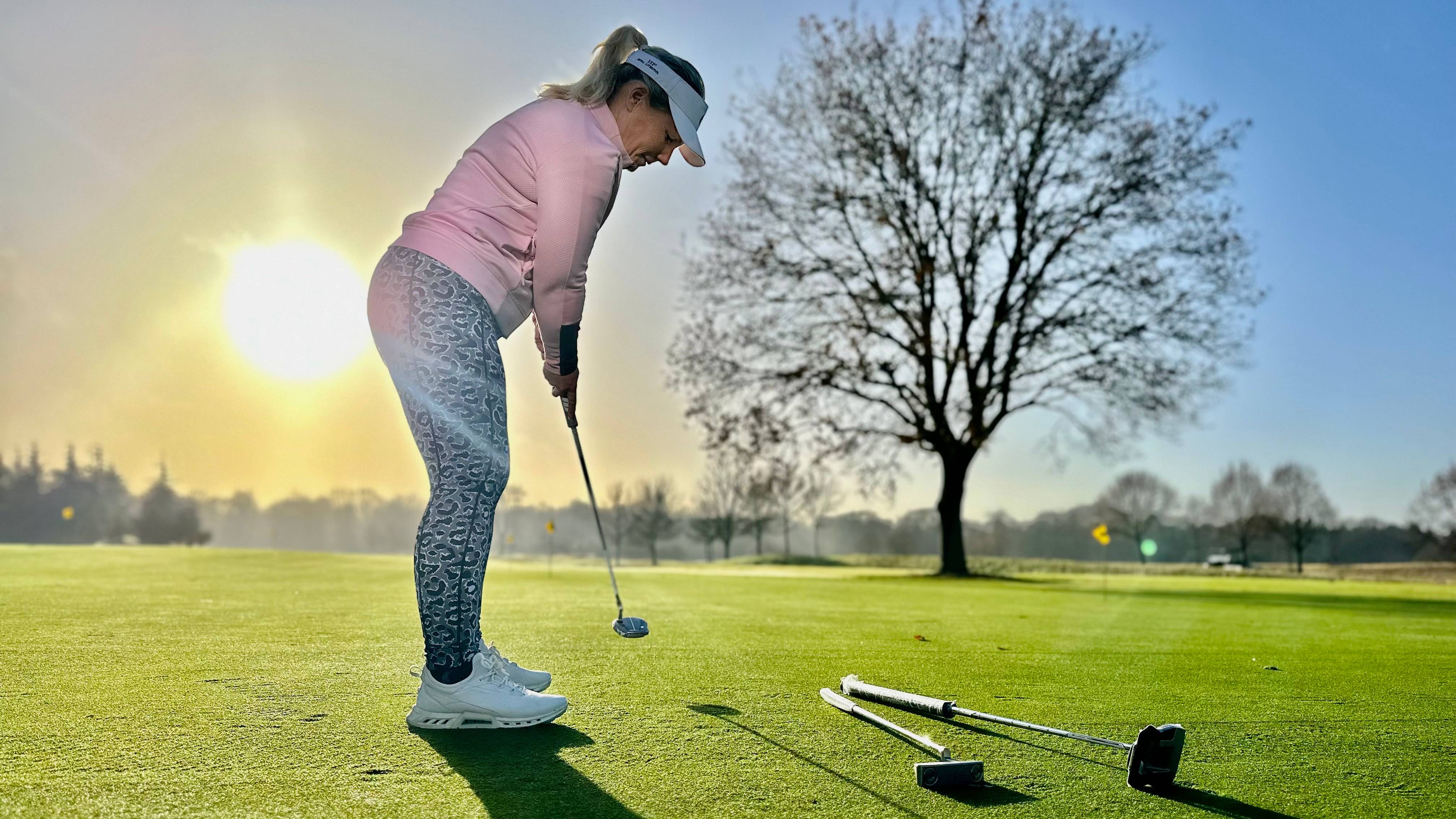
My husband and I manage a busy driving range that is open to the public, so I see the male to female ratio of usage and unsurprisingly it is still very male dominated. During winter months, our peak times for usage are evenings and with the exception of Monday and my women’s practice club night, you will not see as many women in the mix.
I believe there are a few factors that contribute to this, one of the first being that from a young age women feel pressure to make themselves smaller, take up less space. Studies carried out on how children use playgrounds have found this to be true. Boys dominate more space with their games, while girls are found at the periphery in smaller groups. Even girls’ clothing is not as robust and suitable for play as boys, and as a mother of three girls this drives me mad!
How can this possibly relate to women practicing golf? I believe it’s linked. We know there is a huge drop off for girls participating in sport through teenage years, hence the need for national campaigns like‘This Girl Can’. If girls from a young age are made to feel that taking up space, scuffing their shoes and getting stuck in is more for boys, by the time they hit the self-conscious teen years they will be all too aware of standing out and so they give up.
For those women ‘who don’t have time’, it’s not surprising when The Office for National Statistics found in a survey that women on average carry out 60% more unpaid work than men, which will result in them having less energy to pursue hobbies.
As a golf coach, I would love to see more women practicing and now I’m armed with greater insights into the potential barriers, here is my practice guide:
What Is Practice?
Practice involves repeatedly performing specific golf techniques or drills to improve skills, consistency, and performance. This can include activities like hitting balls at a driving range, working on putting, chipping, or perfecting swing mechanics and often involves deliberate and focused effort aimed at refining various aspects of the game.
Practice is not hitting shots in the net or a few chips and putts before you play. That is a warmup, which serves a purpose, but it will not make you a better golfer. An easy way to think of it… revision for an exam is practice, warming up is panicked reading of your notes before you go into the exam room/out to play. In the exam room, that’s when you play, but you will only be able to answer those questions if you have done the hard work and revised, or in our case, spent time practicing and improving your technique.
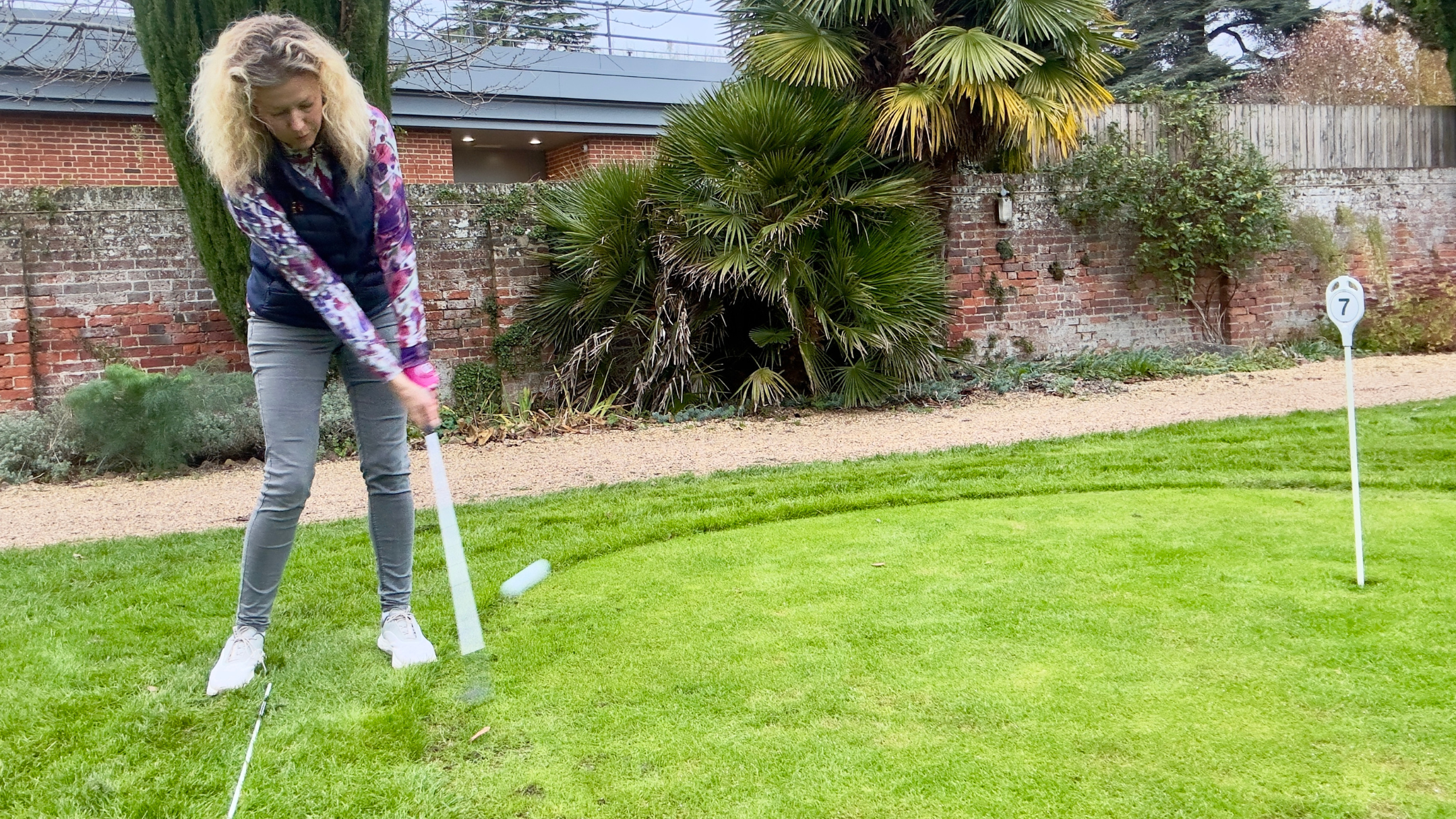
Types Of Practice
To keep it simple, you have practice for improvement of technique, and you have practice for improvement of play. Both should lead to better scoring. Practice for technique could involve having a lesson to gain feedback on what to work on, and practice for play involves games and exercises that create conditions of the real game that will improve your instincts and ability to handle different situations and pressure.
Quality Over Quantity
Golf is a big sport and that can make people feel overwhelmed, knowing where to start with practicing. It’s all too easy to revert to the default of hitting fifty 7-irons and smacking a few drivers at the range rather than engaging with what you need to improve.
The good news is that practice doesn’t have to be hours of hitting buckets of balls on the range or getting back cramps on the putting green. It is all about having a plan on what you want to improve.
Practice can be as simple as working on your balance on the follow through while waiting for the kettle to boil or brushing your teeth. If you are working on your grip, sitting watching the TV while gripping your club is a great way to feel more comfortable. If like me, and the many women who responded are short on time, practicing 8-foot putts while watching TV is still a great way to groove your stroke and gain confidence. Ultimately, it is practicing with purpose and engaging with the outcome of what you are doing.
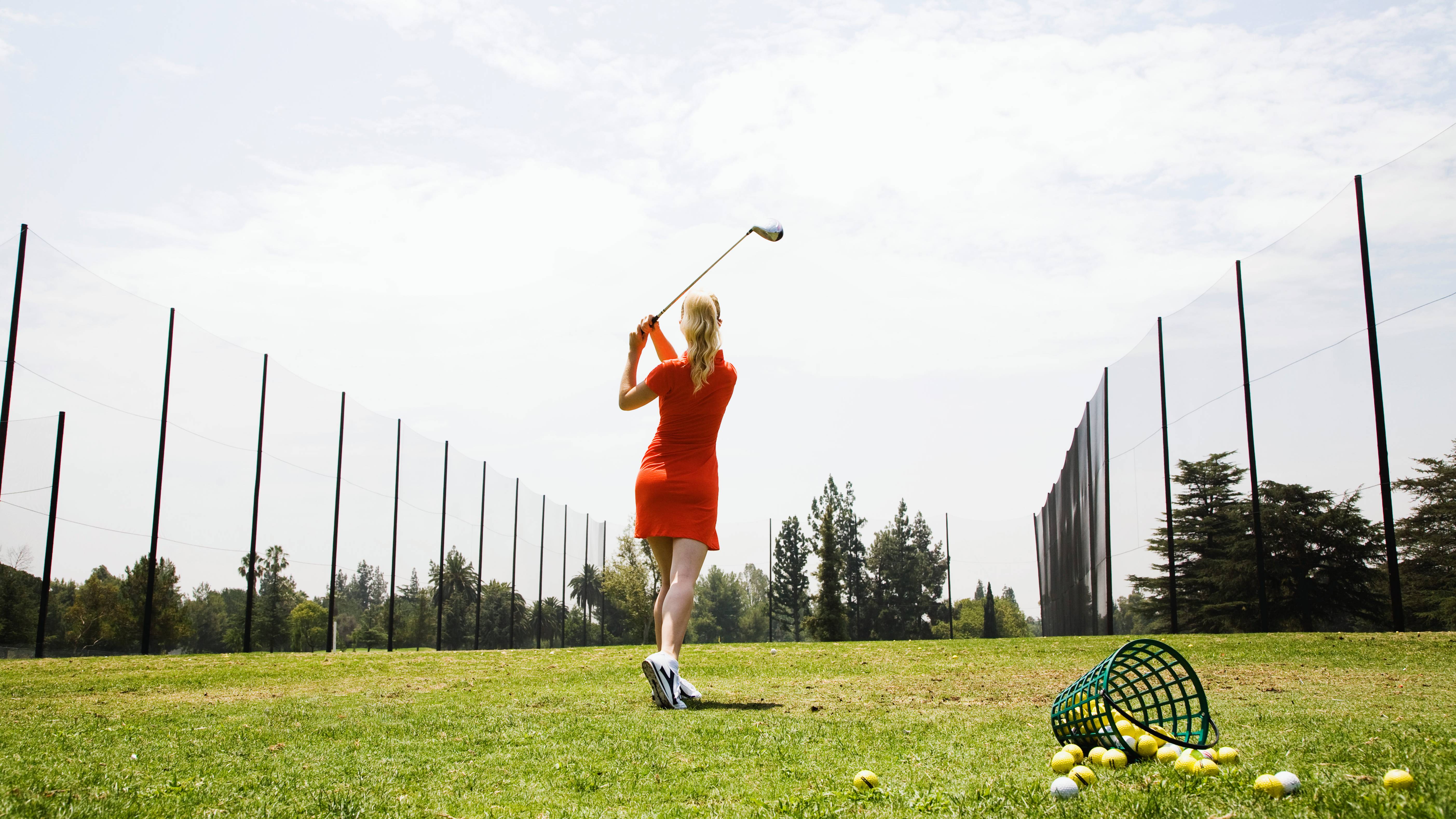
Find What Works For You
We all play golf for our own reasons. If you simply love playing, just play. If you enjoy the solitude of practice and striving for gains, go for it! If you want to practice more but enjoy the social element, find your nearest practice club. If it doesn’t exist, set one up. There have never been as many opportunities to enjoy playing and practicing golf as there is today. Practice does not have to be, and should not be boring, so be bold and try something new to spice up your practice sessions and improve your play.







